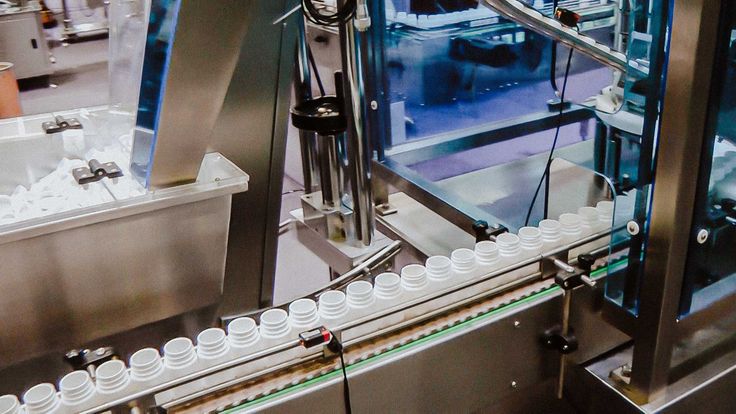Mar
29
100% Defect-Free Plastic Bottles? Here’s How to Make It Happen
 Identifying Common Defects in Plastic Bottles and Effective Detection Methods
Identifying Common Defects in Plastic Bottles and Effective Detection Methods
Plastic bottles are widely used in pharmaceutical, food & beverage, cosmetics, and FMCG industries, where quality and consistency are critical. However, common defects in plastic bottles can arise during the injection blow molding (IBM) or extrusion blow molding (EBM) process, leading to leakage, contamination, and structural weaknesses. Manual inspection methods often fail to reliably identify these plastic bottle quality inspection challenges, especially in high-speed production lines. To ensure defect-free plastic bottles, manufacturers are turning to automated bottle inspection systems like Optomech’s BIS-XL, which utilize machine vision for defect detection and guarantee consistent quality.
Types of Defects in Plastic bottle quality inspection
Plastic bottle defects can arise from multiple factors, including temperature fluctuations, mold issues, raw material inconsistencies, or contamination. Below are the most common defects and how they impact bottle performance:
1️. Sealing Surface Defects (Neck & Thread Issues)
- Short Molding – Incomplete bottle formation leading to sealing failures
- Thread Damage – Deformed or missing threads preventing cap closure
- Ovality or Diameter Variations – Bottle mouth distortion affecting capping
- Black Spots & Contaminants – Foreign particles embedded in the plastic
Detection: High-resolution cameras inspect the bottle neck and threads, detecting micro-defects that could compromise seal integrity.
2️. Sidewall Defects (Structural Weaknesses)
- Holes & Pinhole Leaks – Tiny perforations causing leaks
- Thin Walls – Uneven material distribution leading to bottle collapse
- Burn Marks – Overheating during molding, affecting bottle aesthetics
- Color Shade Variations – Uneven pigmentation, indicating poor material mixing
Detection: Optical inspection systems with customized lighting highlight density variations, making defects highly visible.
3️. Bottom Defects (Stability Issues)
- Concavity or Warping – Improper cooling causes bottle bottoms to curve
- Blow-Outs or Bulging – Excess pressure leads to weak spots
- Foreign Particles in the Base – Dirt or contamination embedded during molding
Detection: Bottom-view cameras capture minute deformations that impact bottle strength.
4️. Internal Defects (Contamination & Imperfections)
Air Bubbles – Trapped air pockets weaken the bottle’s structure
Material Inclusions – Unmelted polymer particles or external debris
Scratches or Internal Stress Marks – Occur due to improper cooling or handling
Detection: High-intensity backlighting & multi-angle cameras ensure internal defects are visible during inspection.
Challenges of Manual Inspection
While traditional human inspection was once a standard, it struggles with:
Fatigue & Inconsistency – Difficult to inspect thousands of bottles per shift
Slow Speeds – Not suitable for high-speed production lines
Subjectivity – Different inspectors may have different rejection criteria
As bottle production speeds exceed 10,000+ bottles per hour, automated machine vision systems have become essential for ensuring consistent quality.01
How Optomech’s BIS-XL Ensures Defect-Free Production
The 01Optomech BIS-XL

is a state-of-the-art machine vision-based bottle inspection system designed to detect and reject defective bottles at high speeds (up to 11,000 bottles/hour).
How It Works:
- Multi-Camera System – Uses 11 high-speed cameras to capture defects from all angles
- Advanced Lighting & Optics – Custom lighting enhances defect visibility
- Automated Sorting & Reporting – Defective bottles are automatically rejected
- 21 CFR Part 11 Compliance – Ensures regulatory compliance for pharma manufacturers
By integrating AI-powered machine vision and precision optics, the BIS-XL provides unparalleled accuracy and efficiency, reducing product recalls and saving costs.
Final Thoughts
Defective bottles can lead to contamination, product failure, and regulatory non-compliance, making automated inspection a necessity for manufacturers. With Optomech’s BIS-XL, companies can achieve zero-defect production, ensuring customer satisfaction and regulatory compliance.
Want to improve your bottle inspection process?
Contact sales@optomech.in or visit www.optomech.in to learn how BIS-XL can help optimize your production line!
